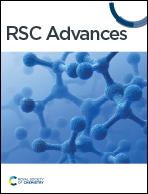Influence of aluminium doping on high purity quartz glass properties
Abstract
High purity natural quartz is used as raw material for the manufacture of quartz glass crucibles for solar-grade silicon ingots production. One key challenge for cost-effective ingot pulling is to maximise the ability of the crucible to withstand the process conditions (i.e., silicon load and temperature about 1500 °C) without deformation. In order to improve this glass property, aluminium was coated into the raw quartz materials. Our results showed that an addition of up to 1000 wt ppm Al substantially reduces deformation of glass and improves viscosity at high temperatures. This is likely due to the reduction of stability of OH groups in the quartz glass as well as a trapping effect of aluminium on oxygen vacancies. This hypothesis is also supported by atomistic models. In the presence of Al, formation energies of silanol groups (Si–O–H) were much higher than without. Furthermore, the presence of Al in the structure significantly reduces mobility of the oxygen vacancies. It was also found that formation of oxygen vacancies hinders cristobalite crystallisation, on the other hand, Al atoms themselves induce local weakening of the Si–O bond which accelerates the kinetics of the reconstructive phase transition from glassy state to crystalline phase. This was also confirmed experimentally in our study.



 Please wait while we load your content...
Please wait while we load your content...